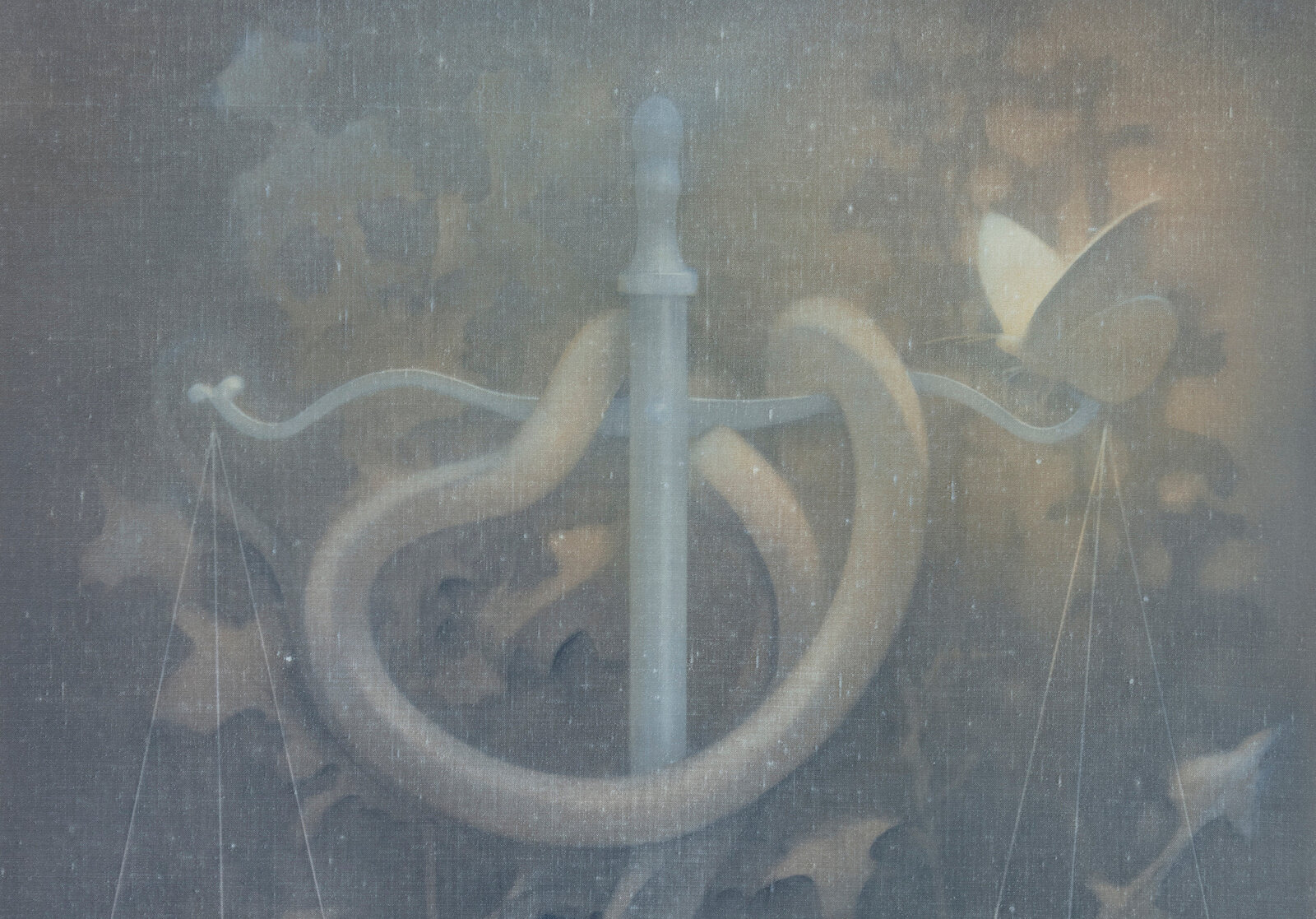Blum & Poe Broadcasts presents free and public access to scholarship and writerly ponderings from our publications archives and network.
In focus this week—an excerpt from Saturnine, the first monograph of Los Angeles-based contemporary artist Theodora Allen, produced on the occasion of the artist's exhibition at Kunsthal Aarhus in Denmark (Geneva: Motto Books, 2021). The catalog brings a magnifying glass to the artist’s symbolic lexicon—serpents, moths, hourglasses, wildfires, hallucinogenic plants, and the cosmos—as windows into timeless inner worlds. Curator and author Stephanie Cristello alternates between fictional texts and critical essays, to look at the way these emblems and allegories remain generative. Connecting specific moments from ancient Greek mythology, medieval psychology, Fin de Siècle Europe, and the zeitgeist of 1960s California, Saturnine offers meditations on the kaleidoscope of references that find their footing in Allen’s paintings, and their powerful resonance in our contemporary moment.
Pre-order the book here.


Excerpt from Chapter II — motifs: moths, hallucinogenic plants, and wildfire
In Theodora Allen’s work, cycles of loss and regeneration point toward the artist’s interests in the making and unmaking of nature. Weaving together disparate images and events, Allen often uses color as an aesthetic cue to reveal histories, associations, and relations between a given subject and its aesthetic use as a motif. These depictions within the artist’s repertoire have ties to language whose associations reveal the depth of metaphor. For example, the terminology used by wildland firefighters to track the spread of a blaze adopts the anatomy of a serpent: the “head” of the fire moves fastest, while the “tail” is the spread at its slowest, often the point of origin. The flame of this tail, furthest away from oxygen, glows a delicate blue. As with Allen’s paintings, it is often with blue pigment that the artist depicts her most distilled, elemental, timeless images: emblems that do not burn but glimmer. Fugitive to immobility, her works picture a series of dialectic oppositions: light where we imagine the cloak of darkness, distance when we expect the singularity of closeness, protection where we envision danger. Through a sequence of material and conceptual inversions, Allen’s work resists contradiction in favor of co-existence.
—Stephanie Cristello

